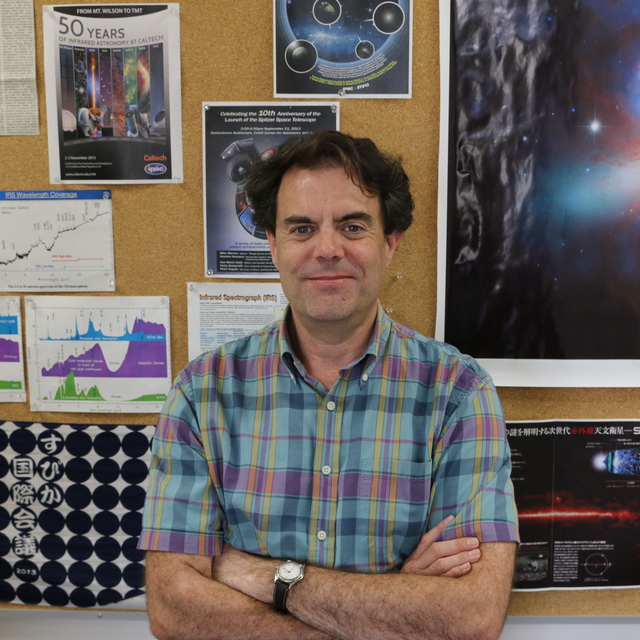August
2017
•
2017ApJ...845...96C
Authors
•
Croxall, K. V.
•
Smith, J. D.
•
Pellegrini, E.
•
Groves, B.
•
Bolatto, A.
•
Herrera-Camus, R.
•
Sandstrom, K. M.
•
Draine, B.
•
Wolfire, M. G.
•
Armus, L.
•
Boquien, M.
•
Brandl, B.
•
Dale, D.
•
Galametz, M.
•
Hunt, L.
•
Kennicutt, R., Jr.
•
Kreckel, K.
•
Rigopoulou, D.
•
van der Werf, P.
•
Wilson, C.
Abstract
•
The [C II] 158 μm fine-structure line is the brightest emission line observed in local star-forming galaxies. As a major coolant of the gas-phase interstellar medium, [C II] balances the heating, including that due to far-ultraviolet photons, which heat the gas via the photoelectric effect. However, the origin of [C II] emission remains unclear because C+ can be found in multiple phases of the interstellar medium. Here we measure the fractions of [C II] emission originating in the ionized and neutral gas phases of a sample of nearby galaxies. We use the [N II] 205 μm fine-structure line to trace the ionized medium, thereby eliminating the strong density dependence that exists in the ratio of [C II]/[N II] 122 μm. Using the FIR [C II] and [N II] emission detected by the KINGFISH (Key Insights on Nearby Galaxies: a Far- Infrared Survey with Herschel) and Beyond the Peak Herschel programs, we show that 60%-80% of [C II] emission originates from neutral gas. We find that the fraction of [C II] originating in the neutral medium has a weak dependence on dust temperature and the surface density of star formation, and has a stronger dependence on the gas-phase metallicity. In metal-rich environments, the relatively cooler ionized gas makes substantially larger contributions to total [C II] emission than at low abundance, contrary to prior expectations. Approximate calibrations of this metallicity trend are provided.
Links




